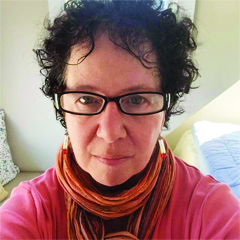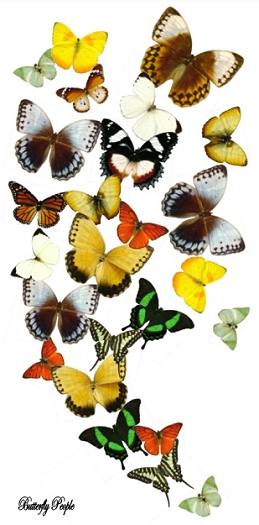Today I want to welcome Joan Wilking to the Meet the Writer series. Wilking is a writer of short stories and nonfiction, an artist, businesswoman, and an ad designer. Her new book, Mycology ($14.95), was released from Curbside Press in August 2017.
Grab the Lapels: What would you like readers to know about your new book, Mycology, which won the Second Annual Wild Onion Novella Contest, judged by Lindsay Hunter?

Joan Wilking: It was a long time coming. Mycology went through a number of iterations that resulted in much darker endings. The characters in earlier versions were more like cartoon characters than actual people. I started the book as a graphic novel combining illustrations and photography, but when that became too cumbersome I put it away for a while. When I came back to the book my attitude had changed. I saw something in the characters that made me know them, not as cartoons, but as loners who were missing something by not having meaningful connections in their lives. I wanted to help them find them.
GTL: Did you learn anything from writing your book?
JW: I learned a lot about mushrooms: their lifecycle, their toxicity, their habitats. After attending some mushroom identification workshops, I learned that I’ll never eat a wild mushroom that hasn’t been identified by someone who really knows mushrooms or that has been chemically tested. There are too many species that look like one thing but are actually another that can make you sick.
GTL: Why do you think your book would be a good choice for a book club pick?
JW: The characters come from very different walks of life. The paths they follow before they come together have elements of interest that are both humane and controversial. The book spans a period in American history from the mid-1950s to the late-1980s, from Father Knows Best to Sex, Drugs and Rock ‘n Roll, culminating in the devastation at the height of the AIDS epidemic. I think readers will find things to identify with (and be repelled by) in the characters that make for a good discussion.

GTL: Are there aspects of your writing that readers might find challenging to them?
JW: The book doesn’t follow the pattern of a typical novel. The opening of each of the fifteen sections is part of an anthropomorphic study of the life and death of a poisonous mushroom and of the wind, as it moves in an around the lives of the characters. There are also some social issues readers might find challenging, or disturbing, about the way pedophilia and homosexuality are presented.
GTL: Does your writing include any research?
JW: For a little book with very short chapters it required a lot of research into mycology, of course, and into the social history of the decades covered in the book. I didn’t want to have to date the sections, so I researched music, current events, fashions, home décor, etc. of the 1950s, 60s, 70s and 80s and wove references to them throughout the book. I also did a lot of research into the settings I used since the book’s scenes occur in upstate New York, Manhattan, several places in California, Belgium, France, and the Massachusetts north shore. I wrote about a key aspect of what I learned from my mycology research in an essay for Necessary Fiction.
GTL: What did you want to be when you grew up, and does this choice influence your writing today?
JW: An artist. I was a painting major in college. I fell in love with graphic design after I graduated. I spent the next forty years designing ads and marketing programs for the likes of Betsey Johnson, culminating in branding high-end real estate for big developers nationwide as the creative director of my own firm and then of a Boston area ad agency. I didn’t start to write until the late 1990s.
Everything I write starts with a visual reference, tangibles that eventually connect to intangible characterizations. There is a passage in Mycology where a character reminisces about Sunday dinner in a restaurant in San Juan, decorated with Plexiglas boxes containing hundreds of taxidermied butterflies.

I ate in that restaurant and knew it would appear in something I wrote when the time was right. The author, Pam Houston, calls the tangibles “glimmers,” daily images and occurrences that catch your eye and stick in your head until you’re ready to write them out. The act of writing is not that much different for me than painting. I collect the images and reinterpret them using words instead of paint.
Thank you so much to Joan Wilking for visiting Grab the Lapels!

I love that feeling of knowing that something will appear in a narrative eventually – a sense of satisfaction and anticipation all at once (re: butterflies in the restaurant)!
LikeLike
I know, right! I tend to not be inspired by images so much as interviews. Terry Gross on Fresh Air is fantastic.
LikeLike
Sometimes it’s auditory. Snippets of an overheard conversation. Or a series of sounds that evoke something. Funny what sticks with you and what doesn’t. How the big complicated moments fade but the small simple ones stick.
LikeLiked by 1 person
Feels kind of like a treasure hunt.
LikeLiked by 1 person
very cool interview, this sounds like an interesting lady with lots of intelligent things to say. Like her, I don’t think I would ever eat a mushroom in the wild that hasn’t been identified as ‘safe’, good words to live by in general!
LikeLike
And they all look so similar! 😲
LikeLiked by 1 person
I took several mushroom identification courses while I was writing the book, which made me especially wary of trusting my own limited knowledge. And the research I did into “death by mushroom” clinched it for me. It’s a terrible way to go.
LikeLiked by 2 people
yikes! 🙂
LikeLike
I love how the narrator of We Have Always Lived in the Castle brings up the Latin names of mushrooms over and over again, like she’s preparing for a test. What a creepy individual! You can learn mushrooms, but you shouldn’t mutter them to yourself.
LikeLike
Sounds intriguing – I also wouldn’t eat a wild mushroom without an expert to hand. And even then, I’ve read so many murder mysteries where mushrooms have been the lethal weapon, I’d be suspicious of the expert’s motives… 😉
LikeLike
Ha ha! Look out, Joan! I’m reading We Have Always Lived in the Castle and Merricat sure know a lot about deadly mushrooms 🤔
LikeLiked by 1 person
Ooh I hope you’re enjoying it – loved that book!
LikeLike
Just finished it today–review to come soon!
LikeLiked by 1 person
LOL
LikeLiked by 1 person
My generation thought wild mushrooms were psychotropic rather than nutritious but I was never tempted.
LikeLike
So, you’re a Girl Scout like me? Good man. #SquaresUnit
LikeLike
Thank you for sharing this interview, Melanie! I love learning about all these writers I’ve never heard of. Have you read any of Wilking’s works? If so, what do you find appealing about them? If not, do you plan on reading some?
Joan Wilking: Thank you for taking part in this interview. I am fascinated by your unique life path from painter to author. Does the final version of Mycology still reflect this graphic novel format you started with originally? I love the concept of including both illustrations and photographs. Also, what drew you to mushrooms and incorporating them into this novella?
LikeLike
I haven’t read Wilking’s work. A lot of authors who approach me for the Meet the Writer series would prefer I review their books, but when I note that it would take me months to get around to reading if I took everyone’s work, they are happy to do a Meet the Writer feature instead. I’d like to read Mycology because I love when people incorporate the environment into fiction. There is now a big push to incorporate environmental studies in all departments of colleges. For example, business + environment, creative writing + environment, music + environment, etc.
LikeLiked by 1 person
I can totally relate to that– I constantly feel like I’m behind on everything related to reading and blogging. Oops. That’s probably not a great thing to feel, but that’s okay. I’m working on it. 😉 I’m glad you feel comfortable enough to be honest and open about your schedule!
The incorporation of environmental studies in college departments like this is a new concept to me. Any idea why this is a trend? I’m struggling to understand why.
LikeLiked by 1 person
Climate change. If we can all get on board with science, perhaps we won’t nuke ourselves.
LikeLiked by 1 person
When I was young and stupid and just out of college I live in a blighted area of Philadelphia. There were many boarded up buildings and weedy vacant lots. An aquaintance of my boyfriend foraged the lots for mushrooms and would show up periodically with his pockets stuffed with urban morels, which I sliced and sautéed and incorporated into omelets. In a word, Yum! That I trusted some stoned out guy’s knowledge of what was edible then seems insane to me now but that was the start of my interest in mushrooms along with stories I’d heard about a famous composer who was a devoted forager.
The published version of my book isn’t illustrated. Each of the fifteen chapters opens with a word picture, which follows the life of a forest, the wind and the mushroom as though they are characters in the novella.
LikeLiked by 1 person
Urban mushrooms: new to me! Wow!
LikeLike